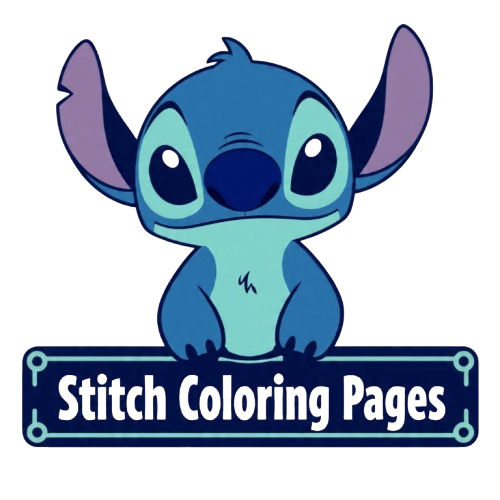In recent years, SpongeBob coloring pages have gained popularity not just as a recreational activity, but also as an educational tool in early childhood learning. With the rise of character-based learning aids, educators and parents alike are exploring how such materials can support cognitive, emotional, and motor development in young children. This article offers an in-depth look at how SpongeBob coloring pages can be used effectively in early childhood education, the benefits and limitations of such approaches, and the key factors that influence their success.
The Role of Coloring in Early Childhood Learning
Coloring activities are a staple in early childhood education because they:
- Enhance fine motor skills
- Improve hand-eye coordination
- Encourage focus and concentration
- Support color and shape recognition
- Foster self-expression and creativity
When paired with popular characters like SpongeBob SquarePants, these benefits can be amplified due to children’s existing familiarity and enthusiasm for the character.
Why SpongeBob Coloring Pages?
1. Familiarity and Engagement
SpongeBob is a globally recognized character, making coloring pages featuring him instantly relatable and engaging for many children. This familiarity often increases participation, especially in children who may be resistant to traditional learning tools.
2. Character-Based Motivation
Children are more likely to engage with tasks involving their favorite characters. This character-based motivation can help sustain attention during structured learning times.
3. Opportunities for Storytelling and Language Skills
SpongeBob coloring pages often depict scenes that can spark storytelling. Asking a child to describe what’s happening in the picture promotes vocabulary development, sentence structure, and narrative skills.
Key Benefits in Educational Contexts
✏️ Cognitive Development
Coloring requires children to make decisions (e.g., which color to use), which encourages problem-solving and critical thinking. SpongeBob coloring pages often feature a variety of scenes and characters, providing rich opportunities for decision-making and imaginative interpretation.
✏️ Social-Emotional Learning
Using shared SpongeBob pages in group settings encourages cooperative play, sharing materials, and discussing stories. Children relate to SpongeBob’s emotions and situations, promoting empathy and emotional understanding.
✏️ Cross-Curricular Integration
Educators can link coloring pages to broader themes such as marine life, friendship, or community helpers (e.g., SpongeBob at the Krusty Krab), thus supporting thematic learning across multiple domains.
Tradeoffs and Challenges
⚖️ Entertainment vs. Educational Value
While SpongeBob coloring pages can increase engagement, they must be used strategically. Over-reliance on branded characters can shift focus from educational outcomes to pure entertainment.
Tradeoff:
- ✅ Pros: Higher motivation, sustained attention
- ❌ Cons: Possible reduction in learning depth if not guided properly
Solution:
Use SpongeBob pages as a springboard to deeper discussion or tasks (e.g., “Why is SpongeBob smiling here? What happened before this scene?”).
⚖️ Structured vs. Free Expression
Some pages are highly detailed, which can restrict children’s creativity. On the flip side, too much structure can discourage exploration.
Tradeoff:
- ✅ Pros: Supports skill building and focus
- ❌ Cons: Limits open-ended artistic expression
Solution:
Balance structured coloring with blank scenes or prompts that invite children to draw their own additions.
Implementation Strategies in Educational Settings
🏫 At Home
Parents can use SpongeBob coloring pages for after-school reinforcement, screen-free entertainment, and storytime extensions. They can encourage children to color while listening to related SpongeBob episodes or reading character-themed books.
🧑🏫 In Classrooms
Teachers may incorporate SpongeBob pages as:
- Entry tasks during arrival time
- Creative writing prompts (“Write what happens next”)
- Rewards for task completion
- Visual supports in lessons about ocean life or community roles
👥 In Therapy and Special Education
Therapists use SpongeBob coloring pages for:
- Building rapport with hesitant children
- Working on occupational therapy goals like grip and tracing
- Teaching emotional labeling through character expressions
Considerations for Decision-Makers
When deciding whether to incorporate SpongeBob coloring pages into a learning curriculum, educators and caregivers must consider:
- Age Appropriateness: Are the themes and images suitable for the developmental level?
- Cultural Sensitivity: Do the characters and scenarios reflect the values and norms of the classroom or home?
- Educational Balance: Is the tool being used as a supplement or a substitute for deeper learning?
- Diversity of Materials: Are other characters, themes, and artistic styles being included to support inclusive learning?
Conclusion
Using SpongeBob coloring pages in early childhood learning can be a powerful way to combine fun and education. When implemented thoughtfully, they enhance engagement, promote developmental skills, and support a range of learning objectives. However, they must be used as part of a balanced educational strategy, one that values variety, encourages creativity, and stays focused on the child’s holistic development.
